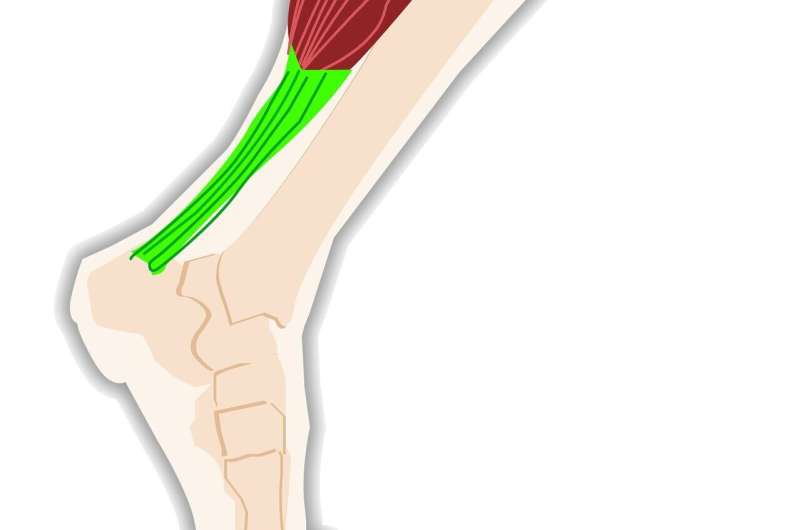SPARC: Protein responsible for tendon strength and resilience isolated in new study

We may have been taught that milk does a body good, but when it comes to the ability of our tendons and ligaments to withstand the stresses of walking, running and injury, Secreted Protein Acidic and Rich in Cysteine (SPARC) is what the doctor ordered. The findings have been published in Science Translational Medicine.
Muscles may be our primary fitness focus at the gym, but without strong tendons, we’d be unable to function as we normally do. Walking, running, lifting, even reaching or bending could cause a ruptured ligament or tendon in the absence of typical development.
“Tendons transfer great forces between muscles and bones—a human Achilles tendon could be used to pull a small car,” Dr. Andreas Traweger, lead author of the study and head of the Institute for Tendon and Bone Regeneration at the Paracelsus Medical University in Salzburg, explained to Medical Xpress. “Without SPARC, however, they are poorly developed and tear easily under load. In humans, a defective SPARC gene variant means that those affected more often end up in hospital with torn tendons and ligaments.”
Together with professor Minghao Zheng from The University of Western Australia and professor Jiang Qin at Nanjing University (China), Dr. Traweger examined the Achilles tendons of mice without SPARC. These tendons were less developed than in normal mice, which resulted in their inability to withstand normal force at the bone attachment; these mice experienced tendon rupture more often after walking on a treadmill.
“SPARC is usually produced by tendon cells and secreted into the extracellular matrix,” says Dr. Traweger. “In our study, we were able to show that the extracellular matrix is weaker when this protein is missing. … This causes tendons to deteriorate: the tissue matrix, mainly composed of collagen fibers, is broken down and inflammation occurs.”
The findings are clinically relevant in two respects, explained Dr. Traweger: “On the one hand, athletes could be examined to see whether they are at an increased risk of a tendon rupture.” This is a preventive measure that could help avoid more than 40% of injuries suffered by competitive runners, and more than 8% of injuries incurred by all competitive athletes. “Further,” says Dr. Traweger, “SPARC could potentially be targeted as a therapeutic option to treat tendon injuries.”
Source: Read Full Article
